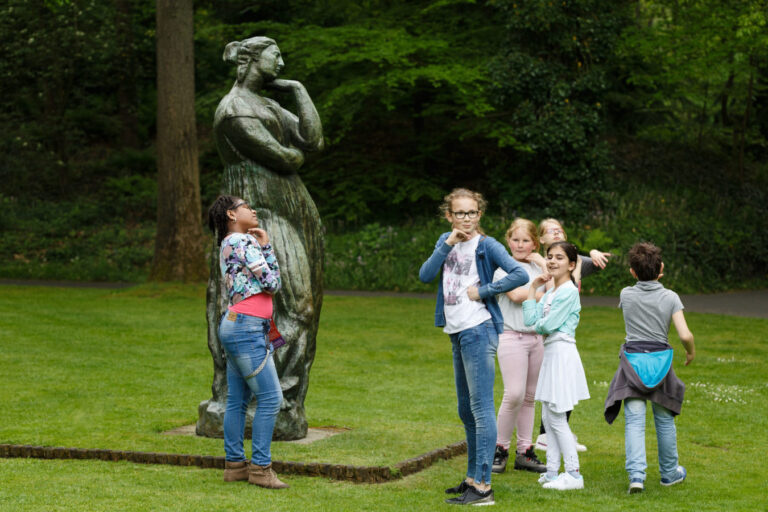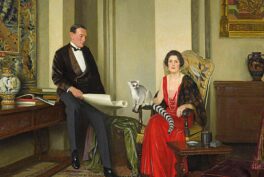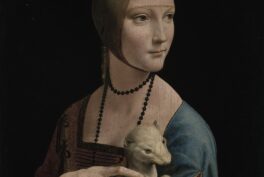Discover 3 artworks, the questions they raise and what children have to say about them.
At the Kröller-Müller Museum we have been experimenting with philosophy and art since 2005. Every year, hundreds of schools visit our museum to philosophize with famous artworks from our collection. Our teaching packages Philosophizing with… consist of lesson cards with viewing questions, fun exercises and provocative philosophical questions. Both teachers and parents guide small groups of children through the museum and have in depth conversations about the artworks and corresponding themes.
The parents are always a bit hesitant at first, because ‘philosophy’ is quite an intimidating term. But once they overcome their hesitation and let the children speak their minds, they are in for quite a surprise: they soon find that art is an endless source of inspiration and conversation. You never know where philosophizing with art might take you. In this blog I will share three surprising encounters with artworks I have had thanks to philosophizing with children.
Jan Fabre, Chapters, 2010. Theme: characteristics
“If I could have a characteristic of an animal, I would want a furry belly like a penguin. You know, so I could glide over smooth surfaces.”
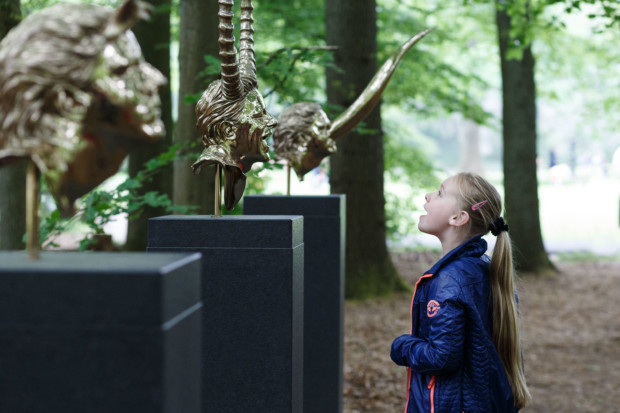
No need to tell kids that art can be great fun. Just look at Fabre’s Chapters and the comments immediately start to flow, accompanied by bursts of laughter. Jan Fabre considers himself a ‘beautiful animal’ and adds a horn or set of antlers to his own head to better show characteristics of himself. For example to show how strong he is. One boy can completely relate to this idea. “I would like a horn, so I can scare my brothers when I am romping with them”.
We talk about the differences between animals and humans: “Do animals have characteristics that people don’t have? And vice versa?” One girl remarks that people can remember things whereas “fish forget everything after five seconds”. “But my grandpa sometimes even forgets my name!” shouts another boy. The conversation takes off: we talk about desired characteristics and how you can show them off. Try it yourself: take a good look at Fabre’s Chapters. What horn or set of antlers would express your characteristics best?
James Ensor, Hopfrog’s revenge, c. 1896. Theme: revenge
“Is that fire?! Look there are people on fire!”
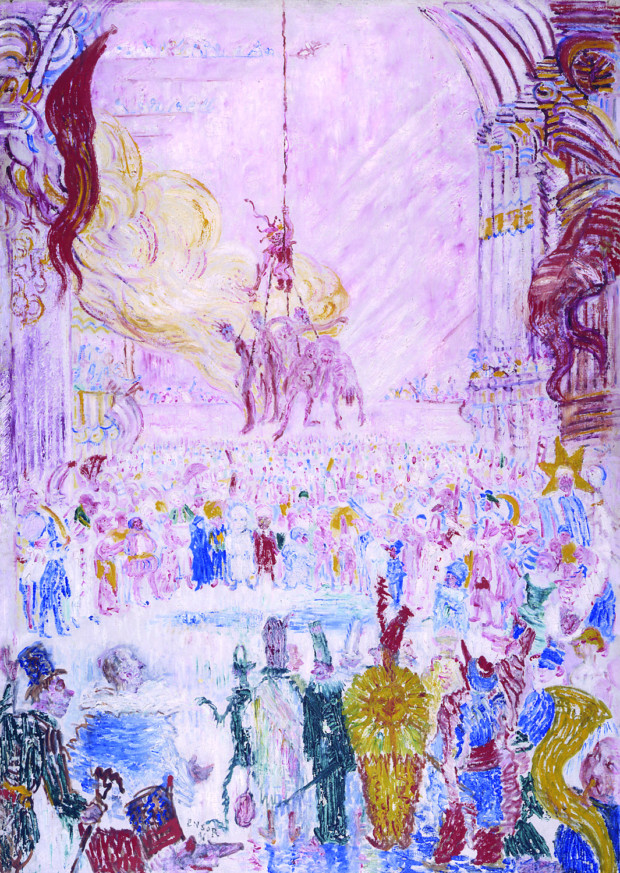
The bright pink colours and funny figures in the foreground immediately attract the eyes of children. But once they dive into the painting and learn Edgar Allan Poe’s dreadful story of Hop-Frog and his revenge on the king, it becomes silent. The question “Is revenge good or bad?” spikes a wide range of answers and anecdotes. From murders to petty crimes and water fights, it turns out that revenge is hard to pin down as either good or bad.
My most memorable encounter with this artwork was when I witnessed a nine-year-old argue for revenge on ‘the bad Germans’ because of WWII. I was in shock and quite frankly did not know what to do. But a classmate immediately opposed his statement “because WWII was a long time ago and no German had ever done him harm, had they?”. It made me think back if I had ever taken revenge and whether it was just or not. And more importantly how do we distinguish good from bad? Just think about it: who has taught you the difference? Can you be certain that he/she was right?
Émile-Antoine Bourdelle, Large Penelope, 1912. Theme: waiting
“Waiting for twenty years?! What if the other person does not wait for you?”.

The story of Penelope and her long wait for Odysseus never fails to amaze. In today’s world where we spent our time looking for entertainment or ‘things to do’, the large figure of Penelope stands quietly, gazing out over sea whilst waiting for her husband to return. Kids and their teachers philosophize about waiting. “Is it something you do, think or something else?” They try out poses for waiting and discover that it is something we all do differently. To really get the kids’ brains cracking the we ask the final question: “could a person forget that he or she is waiting?”
And what about you? Would you wait twenty years for someone? Just ponder on that for a while…
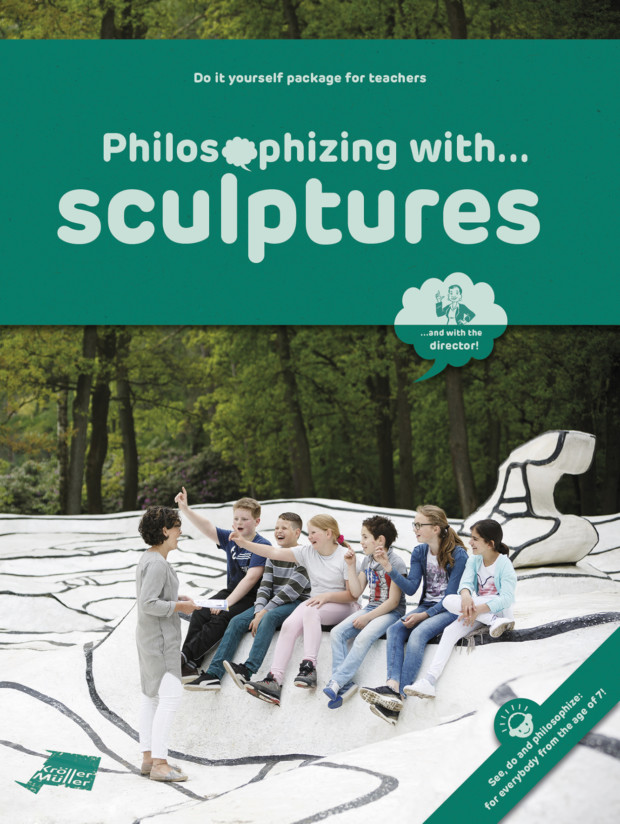
Are you curious to try philosophizing with art? Our Do It Yourself teaching package Philosophizing with sculptures (and with the director) is now available in English! Visit our website to look at examples of lesson cards or order the package at our webshop. I wish you many surprising and mind boggling encounters with art.
